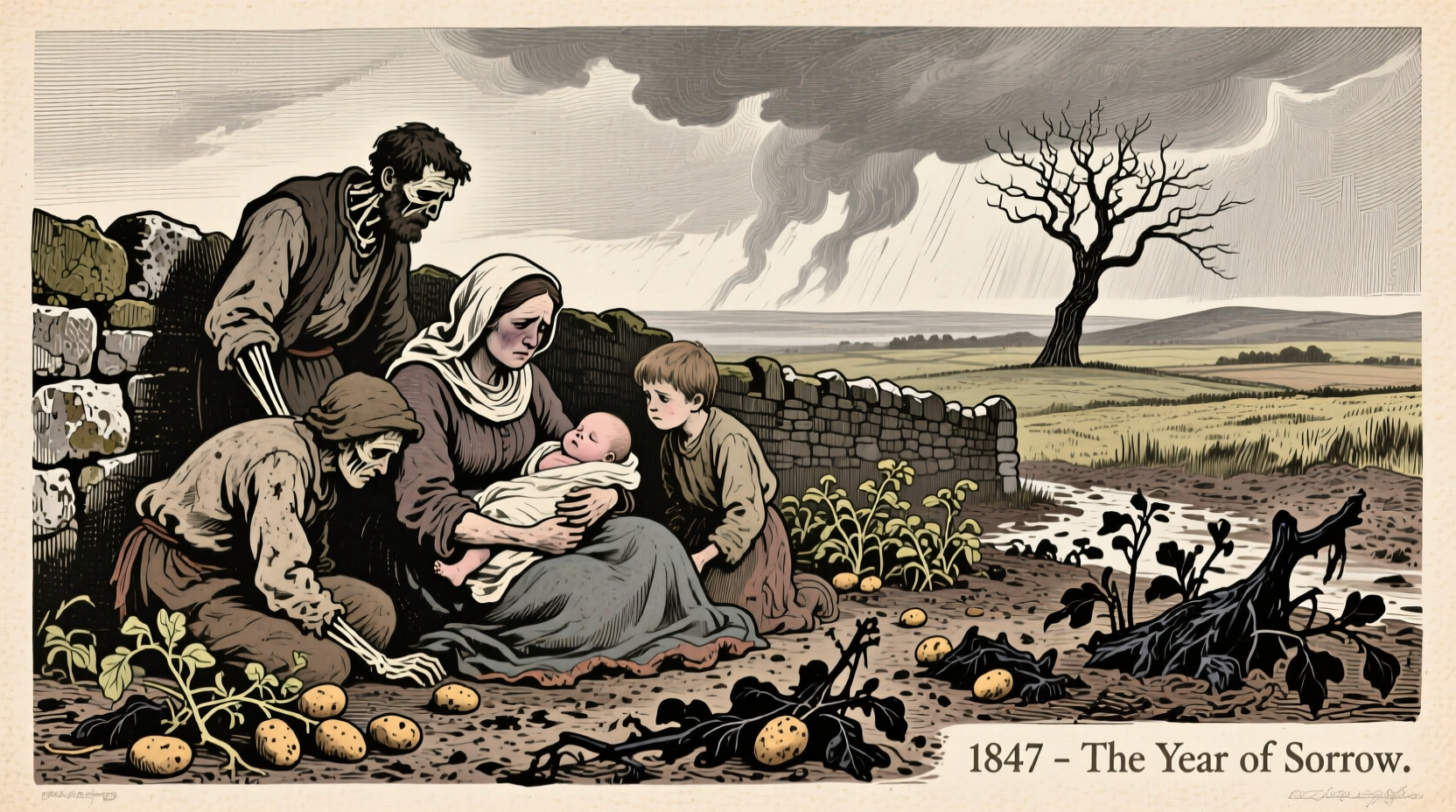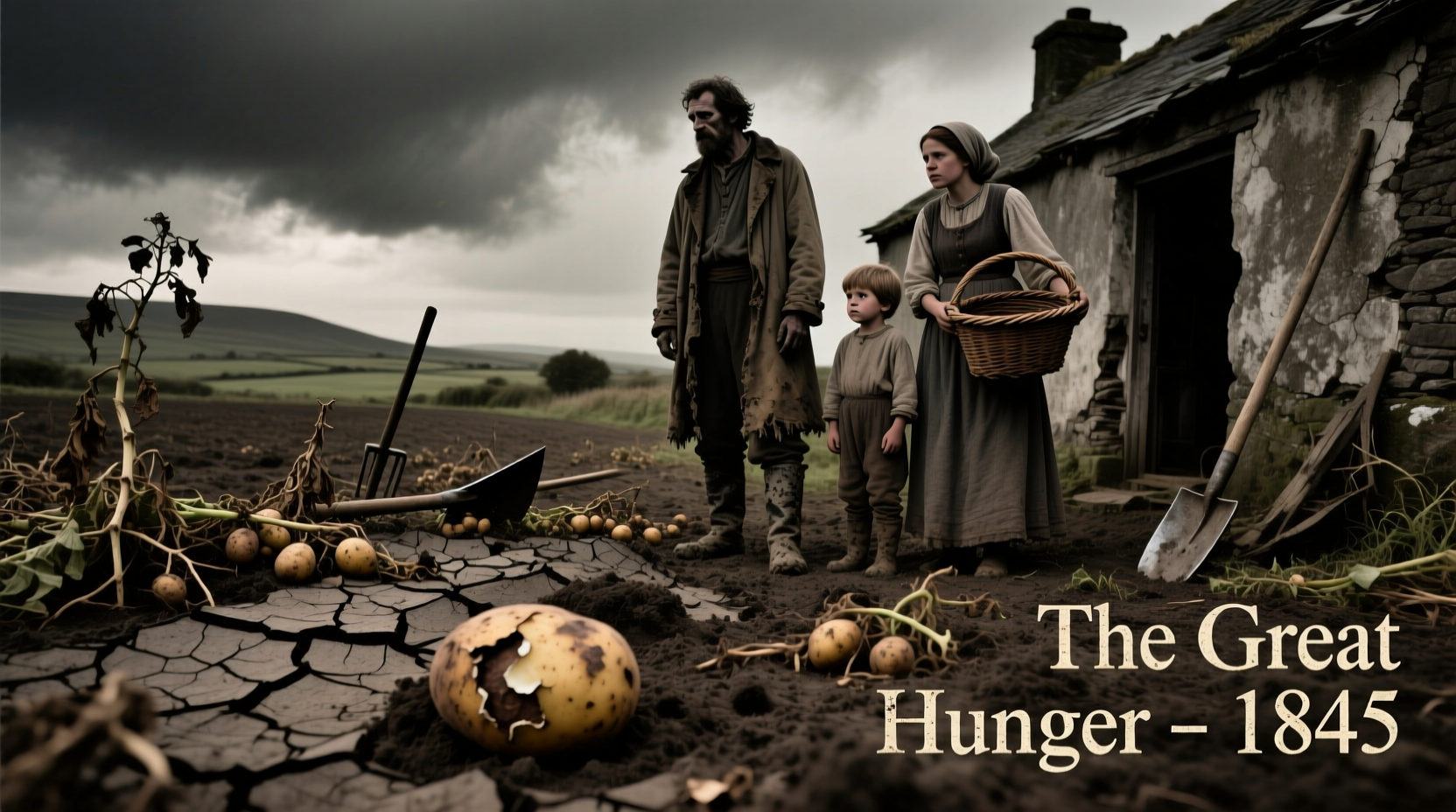The Irish Potato Famine (1845-1852) caused approximately 1 million deaths and forced 1-2 million people to emigrate from Ireland due to a devastating potato blight (Phytophthora infestans) combined with inadequate British government response and existing socioeconomic vulnerabilities.
When you search for information about the potato famine, you deserve clear, accurate facts about this pivotal historical event that reshaped Ireland and influenced global migration patterns. This comprehensive guide delivers verified historical data, contextual analysis, and lasting impacts of the Great Hunger—essential knowledge for students, educators, and anyone seeking to understand this critical period in 19th century history.
Understanding the Irish Potato Famine: More Than Just a Crop Failure
The Irish Potato Famine, known in Irish as An Gorta Mór (The Great Hunger), represents one of the most devastating humanitarian crises of the 19th century. Between 1845 and 1852, Ireland experienced a catastrophic population collapse not merely from crop failure but from a complex interplay of biological disaster, political neglect, and socioeconomic inequality. Understanding this period requires examining multiple dimensions that transformed a natural disaster into a human tragedy.
What Actually Caused the Potato Famine?
While commonly attributed to potato crop failure, the famine's roots extend far deeper. The immediate trigger was Phytophthora infestans, a water mold that arrived in Europe from North America in 1845. This pathogen rapidly destroyed potato crops—the staple food for approximately 3 million of Ireland's 8.5 million people—who depended on the crop for up to 80% of their caloric intake.
However, the disaster's severity stemmed from Ireland's colonial relationship with Britain. Despite the crop failure, Ireland continued exporting substantial quantities of other food products—including grain, meat, and dairy—to Britain throughout the famine years. Historical records from the National Archives of Ireland confirm that during the worst famine years (1846-1848), Ireland exported approximately 3 million pounds sterling worth of food annually.
| Year | Potato Crop Loss | Estimated Deaths | Emigration |
|---|---|---|---|
| 1845 | 33% | 38,000 | 33,000 |
| 1846 | 75% | 250,000 | 120,000 |
| 1847 | 25% | 400,000 | 250,000 |
| 1848 | 50% | 100,000 | 180,000 |
Data source: Central Statistics Office of Ireland Historical Records
The Human Cost: Beyond the Numbers
These statistics represent more than abstract figures—they reflect profound human suffering. Contemporary accounts from workhouse records and parish registers document families reduced to eating weeds, seaweed, and even bark during the worst periods. The Great Hunger disproportionately affected Ireland's rural poor, particularly in the western counties where dependence on the potato was most complete.
British government response remains controversial among historians. While relief efforts existed—including public works programs and soup kitchens—many policies followed strict laissez-faire economic principles that limited direct food aid. The 1846 repeal of the Corn Laws, while theoretically allowing cheaper grain imports, came too late to prevent mass starvation during the critical 1846-1847 period.

How the Potato Blight Spread Across Ireland
The progression of the famine followed a distinct timeline that reveals how a localized agricultural problem became a national catastrophe:
- Summer 1845: First appearance of potato blight in Ireland, destroying approximately one-third of the crop
- 1846: Complete crop failure as blight returns with greater intensity; government halts direct food aid
- 1847 ("Black '47"): Worst year of the famine with peak mortality; workhouse system collapses under demand
- 1848-1852: Recurring blight outbreaks prevent recovery; mass emigration reaches its height
This timeline, documented in the National Famine Museum's educational resources, shows how successive crop failures prevented recovery and created a cumulative disaster effect.
Long-Term Consequences That Reshaped Nations
The demographic impact extended far beyond immediate mortality. Ireland's population declined by 20-25% through death and emigration, with effects that continue to shape the country today. By 1855, Ireland's population had fallen to approximately 6.5 million from 8.5 million in 1845.
Mass emigration created the Irish diaspora that profoundly influenced countries like the United States, Canada, and Australia. Between 1845 and 1855, approximately 1.5 million Irish people emigrated, with many enduring dangerous transatlantic voyages on overcrowded "coffin ships." This migration wave transformed urban landscapes in American cities like Boston, New York, and Chicago, where Irish communities established enduring cultural institutions.
Why the Potato Famine Matters Today
Understanding the Great Hunger provides crucial lessons about food security, colonial policy, and humanitarian response. Modern agricultural practices have reduced vulnerability to single-crop dependence, but similar patterns of food insecurity persist globally where political factors compound natural disasters.
Contemporary historians emphasize that the Irish Potato Famine wasn't an unavoidable natural disaster but a preventable tragedy exacerbated by policy decisions. This perspective remains relevant as we address current food security challenges in vulnerable regions worldwide. The famine's legacy continues to influence Irish identity, diaspora communities, and historical memory across multiple continents.
Exploring Primary Sources for Deeper Understanding
For those seeking authentic historical perspectives, several valuable resources exist:
- The Irish Famine Archive contains digitized letters, diaries, and official documents
- The National Library of Ireland's Famine Relief Records provide insight into contemporary relief efforts
- University College Cork's Great Irish Famine Online offers scholarly analysis and educational materials
These resources help separate historical fact from popular misconceptions about this complex period, revealing how political, economic, and biological factors combined to create one of history's most significant humanitarian crises.











 浙公网安备
33010002000092号
浙公网安备
33010002000092号 浙B2-20120091-4
浙B2-20120091-4